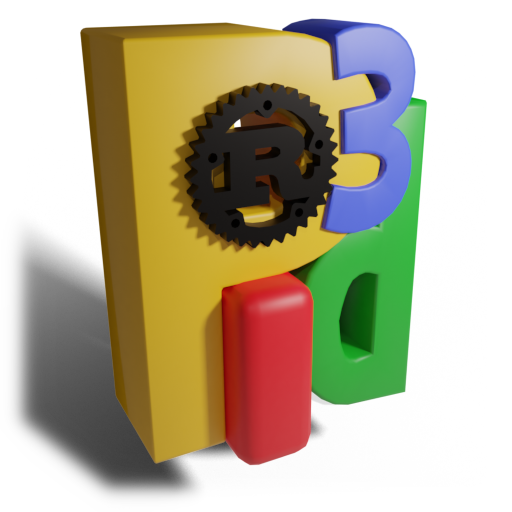translation of pi3d from python to rust
Following parts of the tutorial: http://nercury.github.io/rust/opengl/tutorial/2018/02/08/opengl-in-rust-from-scratch-01-window.html I have started the process of making a rust version of the python pi3d module.
As at commit 12c692f most of the functionality is in place to get demos such as ForestWalk working.
Installation
For this to work you need to install rust. Basically follow the instructions here https://www.rust-lang.org/en-US/install.html It seems to be reasonably fool proof though I've not tried it on Windows yet.
You also need to have SDL2 running. On linux it's pretty easy using
patrick@thiscomputer:~/rust/rust_pi3d$ sudo apt-get install libsdl2-devSee the tutorial link at the top or the rust sdl2 crate site for what to do for windows i.e. put the dll in the same folder as the exectuable. PS I have added the SDL2.dll v2.28.3-win32-x64 but you should download and install the one appropriate for your windows and machine.
Then in the terminal navigate to wherever you cloned or extracted this repo and build the executables using cargo, and run them like this (NB now cd to the pi3d directory):
patrick@thiscomputer:~/rust/rust_pi3d/pi3d$ cargo build --examples --releasethen
patrick@thiscomputer:~/rust/rust_pi3d/pi3d$ target/release/examples/game
patrick@thiscomputer:~/rust/rust_pi3d/pi3d$ target/release/examples/forest_walk
you only have to do the initial build once as this runs the build.rs script that copies over the examples dependencies. After that you can run examples using.
patrick@thiscomputer:~/rust/rust_pi3d/pi3d$ cargo run --example game --release
and all the source will be checked and recompiled as required.
Building for release will take longer (maybe) and exclude debugging symbols etc but
run faster (obviously) and will be much smaller. If you want to build for
debug (probably sensible) exclude the --release. However if you do this
the required support files in target/release/textures, models, ecubes
and fonts will have to be copied into the target/debug/ directory.
On the Raspberry Pi the OpenGL used by default SDL2 won't work unless you use raspi-config and switch the graphics driver to the new experimental one. It should be possible to compile SDL2 to use the built in Broadcom drivers but I've not tried that. (Let me know if you do and what the problems are).
TODO::
installation, requirements and compile instructions on here!
build script to copy support files (images, models, fonts etc) to target
directory
Fonts and lettering.
error and failure handling. Many functions need to return a Result<..> wrapper around whatever they are supposed to do.
Texture blender option (lower alpha to drop pixel)
Find out why last value of array_buffer is always set to zero (i.e. why a sacrificial extra one needs to be added)
Mouse buttons
Offscreen textures, screen capture and post processing
Lifetimes and controlled deletion of Shaders and Programs.
More elaborate Camera functions.
Other Texture types i.e. different internal storage modes supported by OpenGL
As at 16 Dec 19 there are some trials making a python wrapper
see pyo3_module directory
